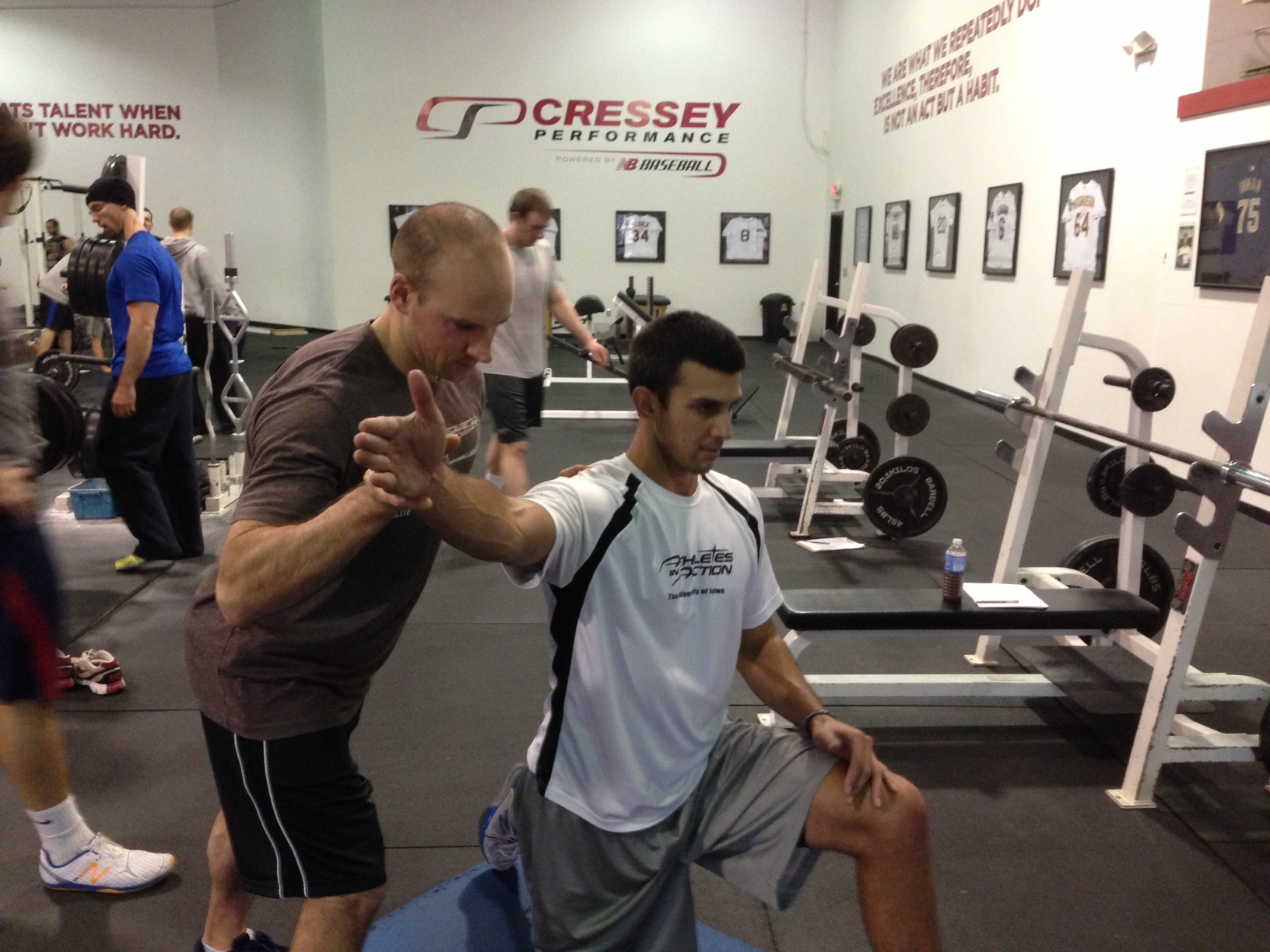
Common Arm Care Mistakes – Installment 6
It’s that time of the year when our baseball players are in-season, so things get a bit quieter around Cressey Sports Performance. Sometimes, it’s even so quiet that my staff members film videos like this:
As impressive as this reverse stunner was, I actually get even more excited about taking a step back to work “on” the business instead of “in” the business when quiet season rolls around. Often, this work on the business consists of “audits” on everything from assessment, to programming, to coaching cues; we want to know how we can get better. One topic that came up during one of these discussions was the recent trend of fitness professionals and some physical therapists insisting that upper body carrying variations with appropriate joint positioning would suffice for arm care. Examples would include things like Turkish Get-ups, or bottoms-up carrying variations:
While I absolutely love all these exercises, I firmly believe that they are only a few pieces of a larger puzzle – and this brings me to this arm care mistake:
Not selecting exercises that appreciate the true functional demands placed on the shoulder and elbow during throwing.
The problem with the “carries are enough” mindset for shoulder health is that this opinion is heavily predicated on the assumption that we’re talking about general population folks who don’t have to stabilize extreme positions like end-range external rotation during the late-cocking phase:
A 90/90 External Rotation Hold would be a much more appropriate training strategy that would appreciate the unique joint position demands of throwing, as Eric Schoenberg demonstrates:
Another example would be the crazy distraction forces that occur at the shoulder during ball release:
A rhythmic stabilization at the ball release position probably yields better carryover to the act of throwing:
Most of the research on isometric training shows a 10-15 degree carryover in strength from the joint angle trained. In other words, if you don’t train anywhere near end-range external rotation, don’t expect to be strong in that incredibly crucial position.
I’ve only spoken to joint position specificity thus far, though, and there is more to this discussion. Baseball players also need to handle some pretty crazy velocities of arm speed – particularly with respect to shoulder internal rotation and horizontal adduction, as well as elbow extension. Good programs start out by building strength through these patterns:
Once a solid strength foundation is in place, we need to begin to challenge athletes on the velocity end of the spectrum:
Very simply, to keep throwers healthy, you need to challenge both cuff strength and cuff timing – and do so at functional significant positions. In my opinion, just relying on carrying variations doesn’t really accomplish either of these challenges correctly, and you can’t carry in the positions that really matter.
As a final point, I’ll add that I think it’s a leap of faith to say that a largely reflexive muscle group (the rotator cuff) will automatically fire across an entire population when we know that structural deviations from normalcy (e.g., asymptomatic cuff tears, labral pathology) are widely prevalent.
Carrying and supporting variations are absolutely fantastic and I’ll continue to use them a ton, but in my opinion, it’s shortsighted to say that they can serve as a complete replacement to more “functional” arm care drills that replicate the forces and positions our players encounter on the field.
If you’re looking to learn more about our comprehensive approach to arm care, I’d strongly encourage you to check out an upcoming Elite Baseball Mentorship.





